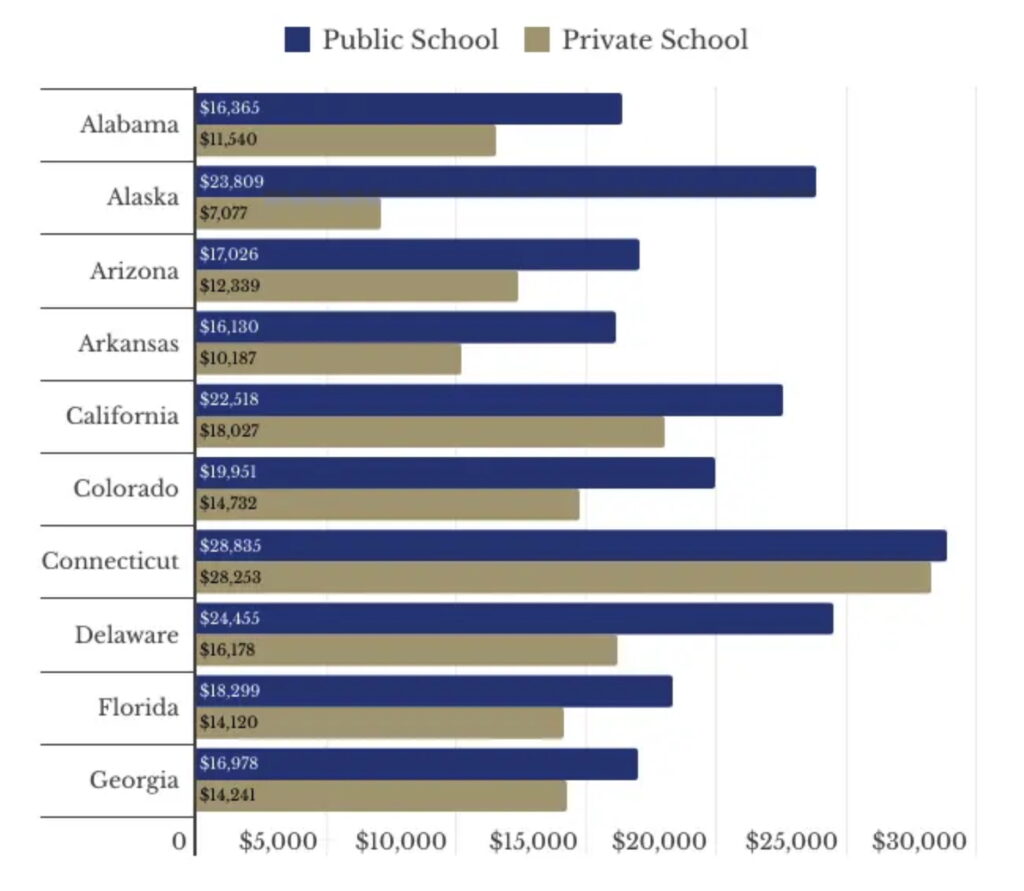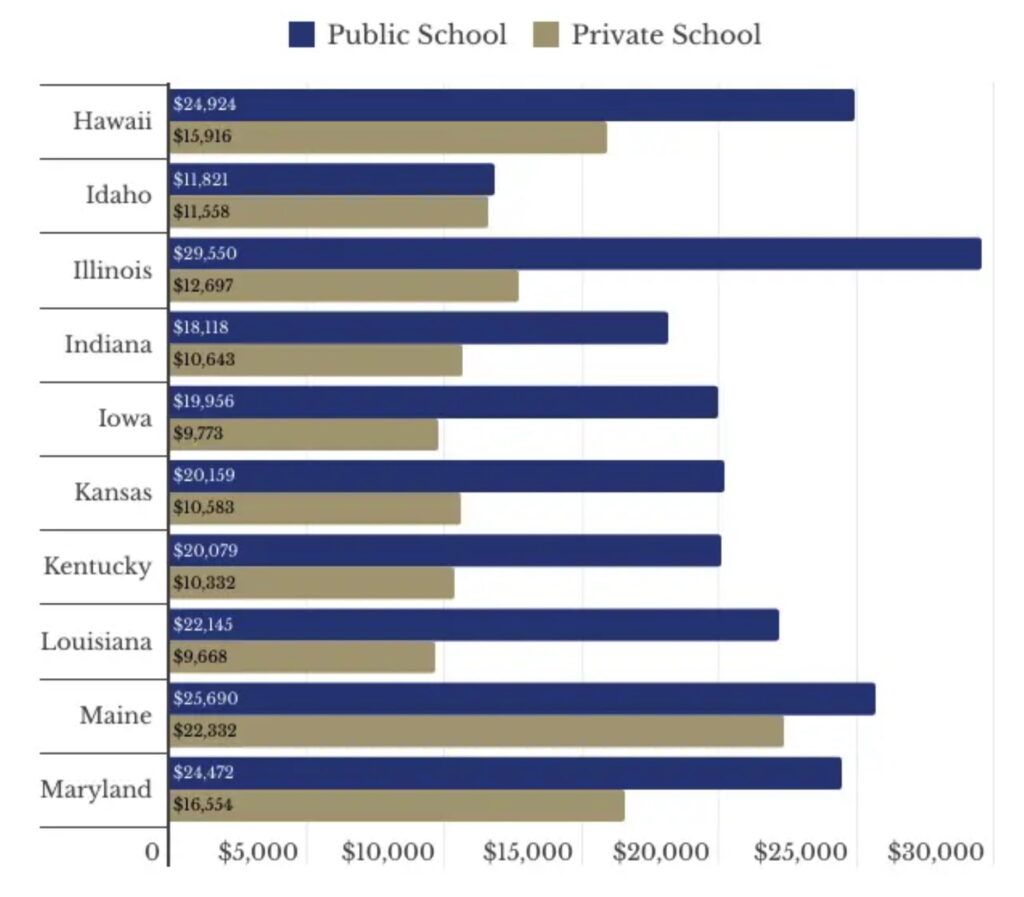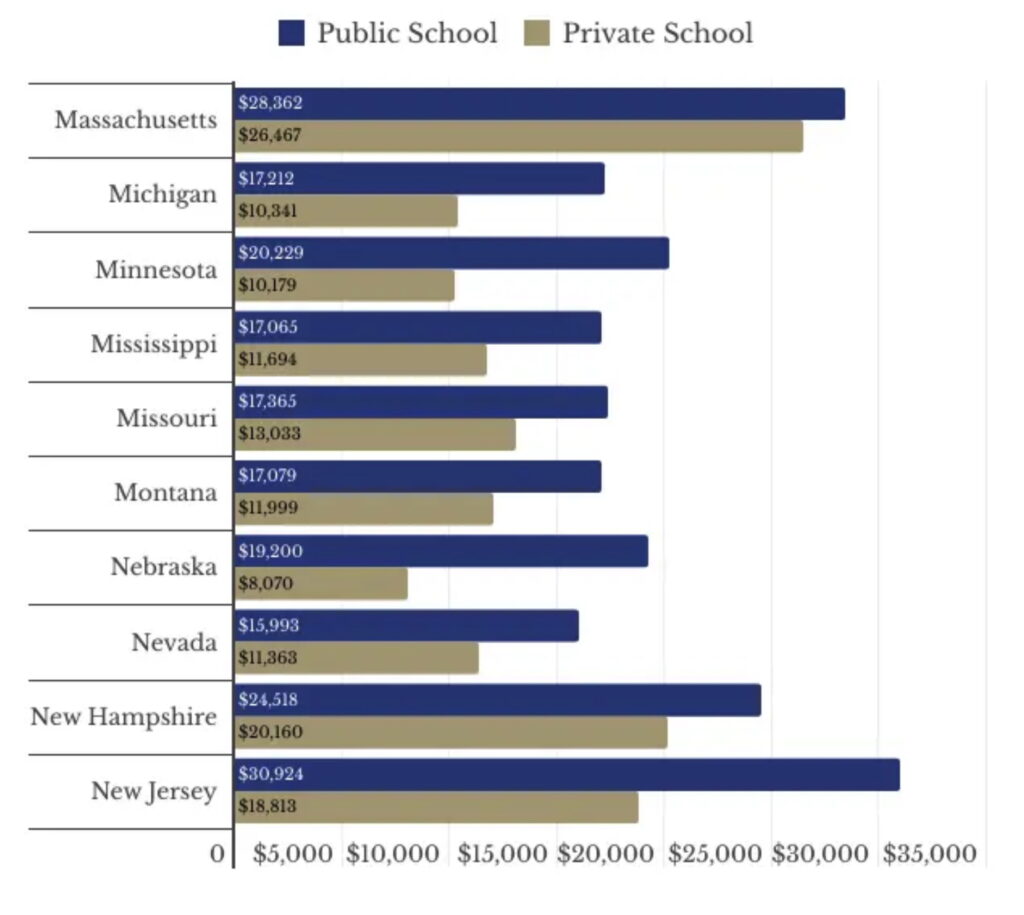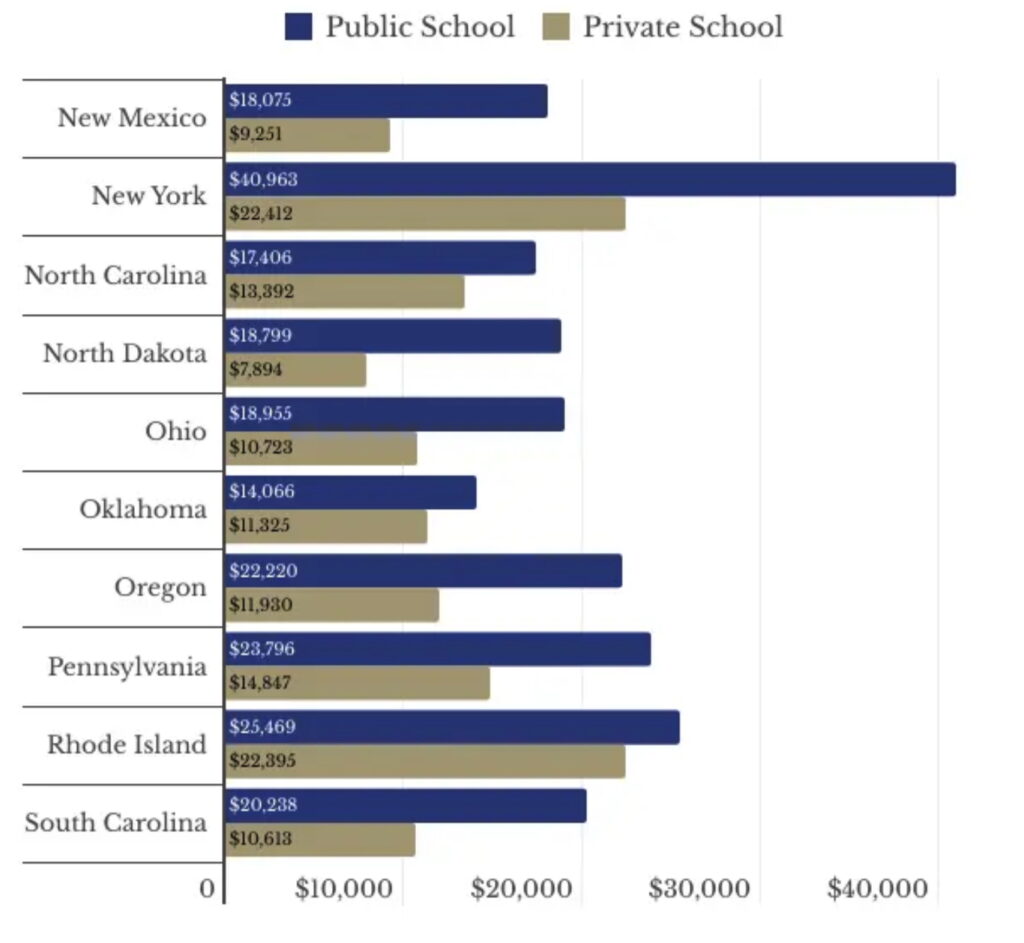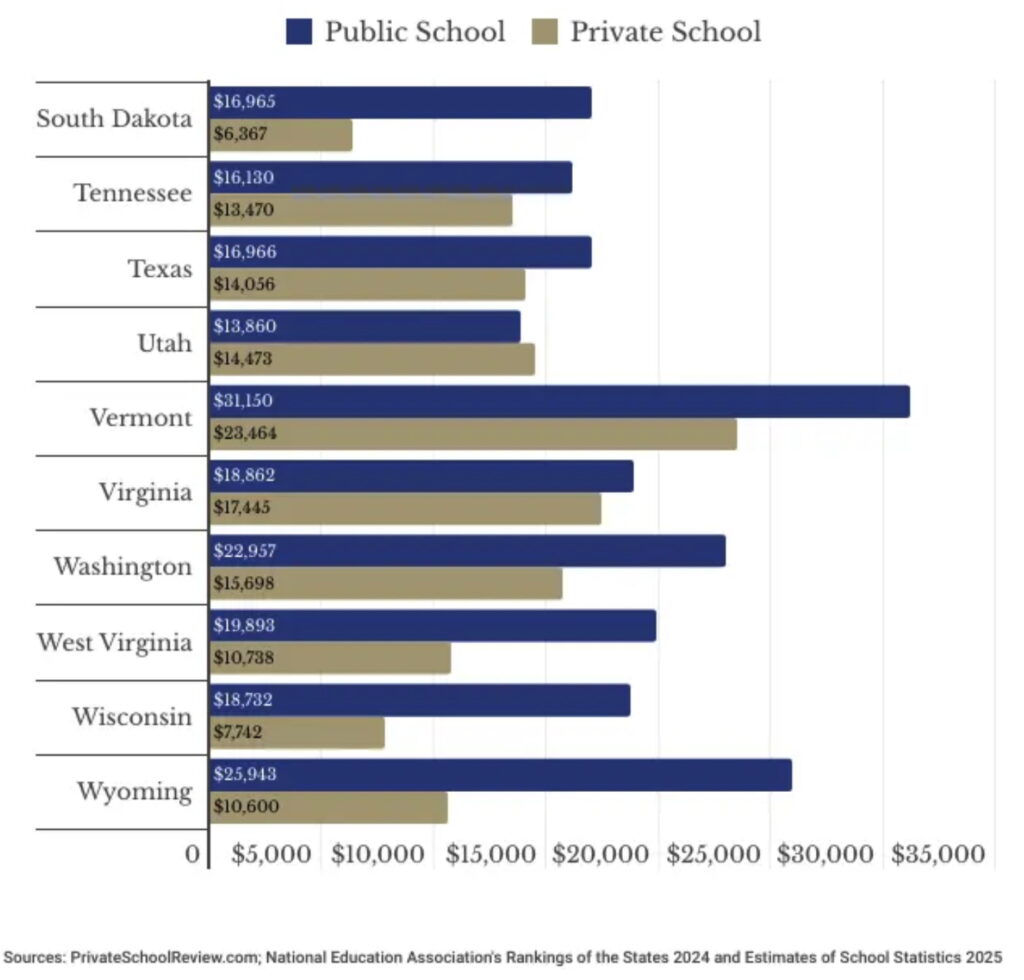(The Lion) — Public school spending has grown so rapidly in recent years that it now exceeds the average cost of private school in every state but Utah, a new study shows.
Yet, how the money is being used – and the results it is producing – is under more scrutiny than ever as parents seek alternatives through school choice.
The contrasts are glaring: In New York, public schools spend nearly $41,000 per student, but private school tuition averages just $22,412, according to an analysis by the Oklahoma Council of Public Affairs.
In some states, public schools actually spend more than double their private counterparts.
Indeed, Illinois’ private tuition averages $12,697, compared with $29,550 in per-pupil spending at public schools. Even Massachusetts and Connecticut – home to some of the nation’s most expensive and elite private schools – still spend more on public education than the average private tuition.
Corey DeAngelis, a school choice advocate, called the public school system “an international embarrassment.”
“Public schools spend about $20,000 per student annually. That amount is about 33% higher than the average private school tuition in the U.S.,” DeAngelis told The Lion in an email.
“We spend more money per student than just about any country on the planet, and our public schools are failing miserably. Less than a third of eighth-grade students were proficient in math last year.”
Only Utah spent more on private education than public, yet just $613 more per student.
Despite record spending, public school test scores continue to decline, proving more money does not equal better outcomes.
One factor is how the money is spent. The number of administrators has grown significantly in recent years, while the number of classroom teachers has remained mostly flat. A study by The 74 found spending has far outpaced teacher salary growth, meaning much of the new funding is not going into classrooms.
Oklahoma spends only 53.3% of its budget on instruction, and nationally it’s 58.8%.
Another factor is investment in facilities.
Examples include an Oklahoma district spending $110 million on athletic facilities in 2022 and a Georgia school district building a $62 million football stadium.
By contrast, many private schools operate with modest resources yet achieve stronger academic results. A study by Tulane University researchers Douglas Harris and Gabriel Olivier found the most common private school model nationwide was a microschool or small-scale private school with about 30 students and tuition of around $5,000.
“Many private schools evidently operate ‘under the radar’ with very few students in church basements, for example,” Harris and Olivier write, while suggesting new school choice programs such as education savings accounts and tax credit scholarships could expand access to these affordable schools.
A recent poll commissioned by the American Federation for Children found parents of school-age children preferred pro-school choice candidates by a 2-to-1 margin.
Still, teachers’ unions continue to fight such programs, insisting they hurt public schools and arguing schools are underfunded.
Ben Scafidi, an economist at Kennesaw State University in Georgia who studies education finance, says those arguments are misleading.
“What public school lobbyists often do is compare public school spending to the tuition level at some well-known and very expensive private school in a big city,” Scafidi told the Oklahoma council. “However, the tuition at one of the most expensive private schools in a given state is not representative of tuition levels across all private schools.
“Policy analysts and the media should look at average tuition levels and compare them to average public school revenues per student, for a sensible, apples-to-apples comparison.”
In Oklahoma, for example, private school tuition averages $11,325, which is less than the $14,066 the state spends on public school tuition. And research found one-third of schools actually charge less than $7,500, which is the maximum award under the state’s Parental Choice Tax Credit school choice program.
While opponents continue their tropes, Scafidi says that tactic “involves a willful aversion to the reality of typical private-school costs.” Private schools have long done more with less, providing a more efficient, academically stronger alternative at lower tuition rates.
That’s why DeAngelis is emphatic: state money should go “directly to students instead of the failing system.
“Parents know their children’s needs better than bureaucrats and should have the power to choose the school that best meets their needs and aligns with their values. Education funding is meant for educating children, not for protecting a particular institution. We should fund students, not systems.”
